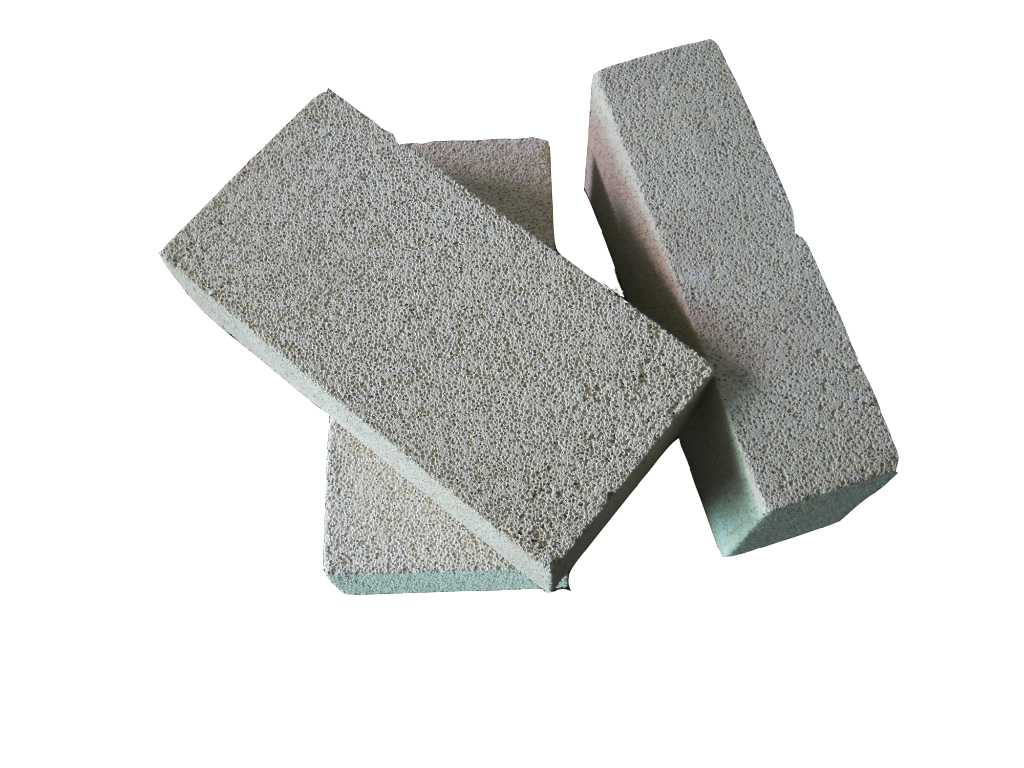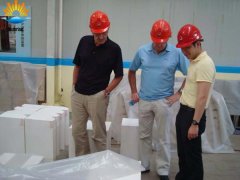Products List
- Silica brick for glass kiln...
- BG-98 superior silica bricks for gla...
- Insulating silica brick...
- High thermal shock resistance and ze...
- High bulk density and High thermal c...
- Unshaped refractory Silica Refractor...
- Silica brick for hot blast stove...
- Silica brick for coke oven...
- Silicon brick for carbon furnace...
Classic Case
-
British Refractories customers to
June 7, 2011 the British Refractories Company custo...
-
Turkish customers to visit our fa
On 26 July,2013 Turkey customers visited our fact...
Refractory Knowledge
Pores in the Refractory Bricks
Date:2016-01-12 14:09 From:Zhengzhou Sunrise Refractory Author:admin
Porosity is the ratio of its pore volume to the total volume of the refractory brick. There are two types of pores in the refractory brick: closed pores and open pores.

Closed pores are isolated within the material and have no channels connecting to outside of the body. Open pores have at least one end that connects to the surface and can be filled with the fluid. Open pores that run through products and allow the fluid to pass through are also called through pores.
The ratio of its open pore volume to the total volume of the refractory brick is called apparent porosity. The ratio of its closed pore volume to the total volume of the refractory brick is called closed porosity. The ratio of its total pore volume to the total volume of the refractory brick is called true porosity. True porosity is equal to the sum of apparent porosity and closed porosity.
Except cast products, asphalt binding products, impregnated products and some insulation products, most pores in the refractory bricks are open pores. Since the volume of closed pores is difficult to measure, porosity usually refers to apparent porosity. The apparent porosity of refractory bricks can be as small as near zero or as large as 80%. Dense products with apparent porosity of 10-28% are called low porosity refractory products. The porosity of insulation materials is more than 45%.
Porosity is the basic technical indicator of the most refractory products. It affects almost all properties of refractory products, especially strength, thermal conductivity, slag resistance and thermal shock resistance. When porosity increases, strength decreases, because the decrease of the solid cross-sectional area cause the increase of actual stress and pores can cause the concentration of stress and the decrease of strength. Effect of coarse pores is more significant.
Since air itself has a low thermal conductivity, the increase of porosity can significantly reduce thermal conductivity. High porosity can increase the penetration of slag into products or aggravate the oxidization of carbon of carbon refractory materials, resulting in the decrease of slag resistance of products.
Due to the complex influence of porosity on strength, thermal conductivity, linear expansion coefficient and elastic modulus, it also has complex influence on thermal shock resistance. Most products have the best thermal shock resistance when porosity is within a certain range. Reducing porosity can increase the softening temperature under load and high temperature creep resistance.
Different refractory products have different requirements on the porosity. When manufacturing low porosity dense products, the first condition is to use low porosity materials. When manufacturing high porosity insulation products, insulation raw materials are used and combustible materials or chemical substances are added to generate pores and increase porosity.
Contact Us
- E-mail :sales@sunriserefr.com
- Phone : +86-371-63838939
- Fax:+86-371-63835539
- Company Address : No.36 Fengchan Road Of Zhengzhou, Henan, China (Mainland)



